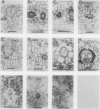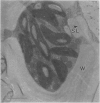Abstract
This study was undertaken to examine the degree of Kranz anatomy development in the species intermediate to C3 and C4 types (C3-C4) in Panicum, Neurachne, Flaveria, and Moricandia. In each genus, C3 and/or C4 species were used for comparison. Leaf transections from each species were examined by light and transmission electron microscopy. The percentages of leaf photosynthetic cell profiles partitioned to bundle sheaths were higher in C4 than in C3 species, while C3-C4 species tended to be in between. However, percentages for C3-C4 species in Moricandia and some C3-C4Flaveria species were not greater than C3. When expressed on a cell profile area basis, C3-C4 species partitioned more photosynthetic tissue to bundle sheaths than C3 species in Moricandia, but not in Flaveria. Neurachne minor S. T. Blake (C3-C4) partitioned a very small portion of cell profile area to the inner bundle sheaths (5%) compared to Neurachne munroi F. Muell (C4) (21%). The percentage of organelles partitioned to bundle sheaths was much greater in C3-C4 than in C3 species. The average C3 percentages for mitochondria plus peroxisomes were 19, 8, and 19.5% for Neurachne, Flaveria, and Moricandia, respectively, compared to 41, 29, and 46.5% for the C3-C4 species. The CO2 compensation concentration was negatively related to the partitioning of tissue to bundle sheaths and to the percentage of organelles in bundle sheaths. It is concluded that all of the C3-C4 species examined have developed some degree of Kranz anatomy and that this altered anatomy is involved in their reduced apparent photorespiration.
Full text
PDF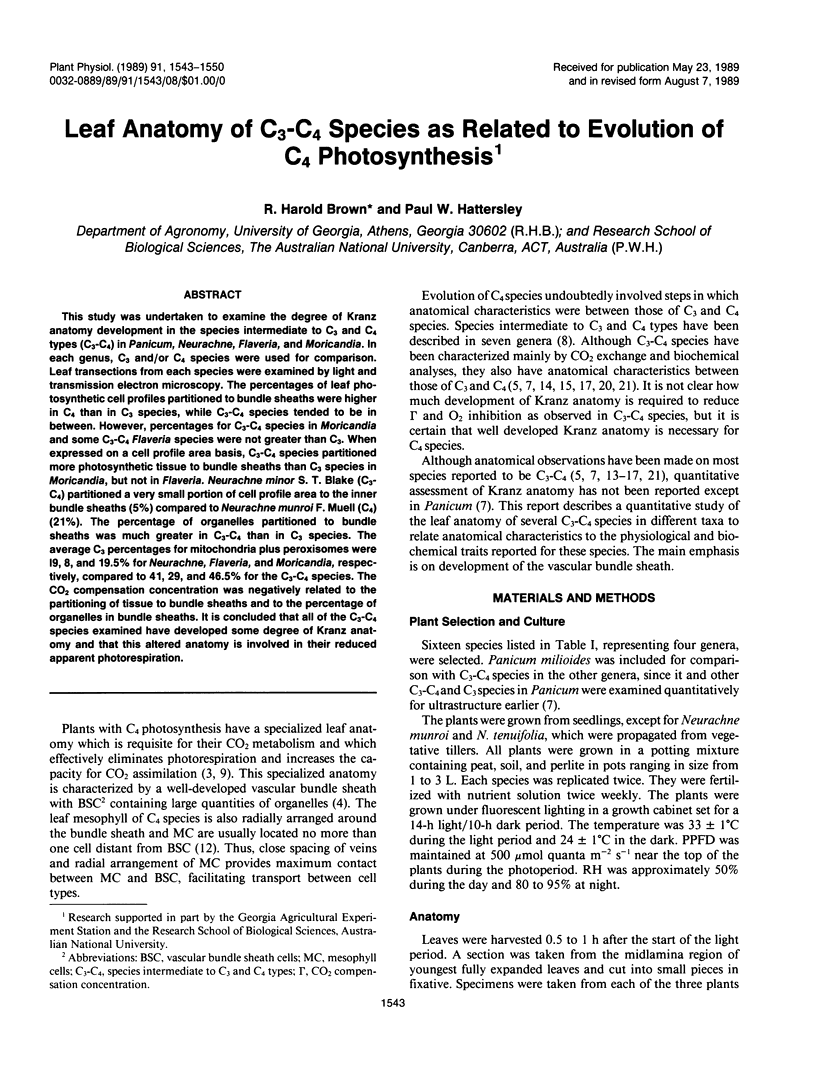
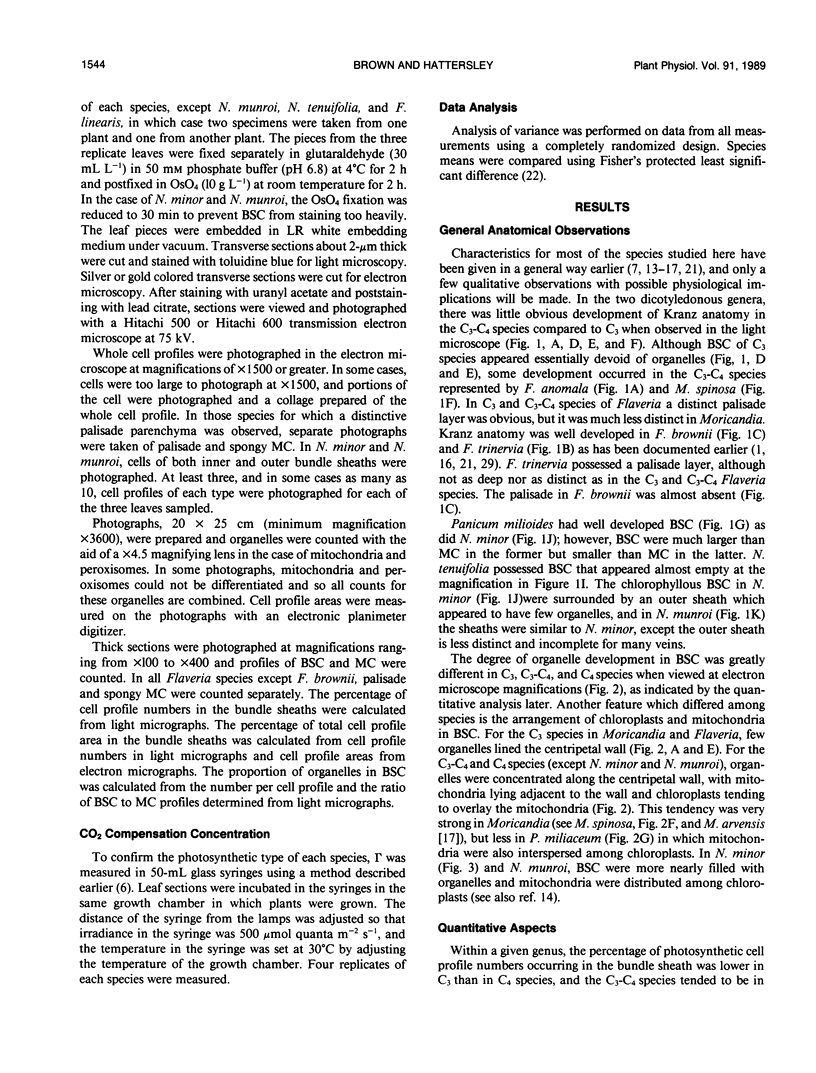
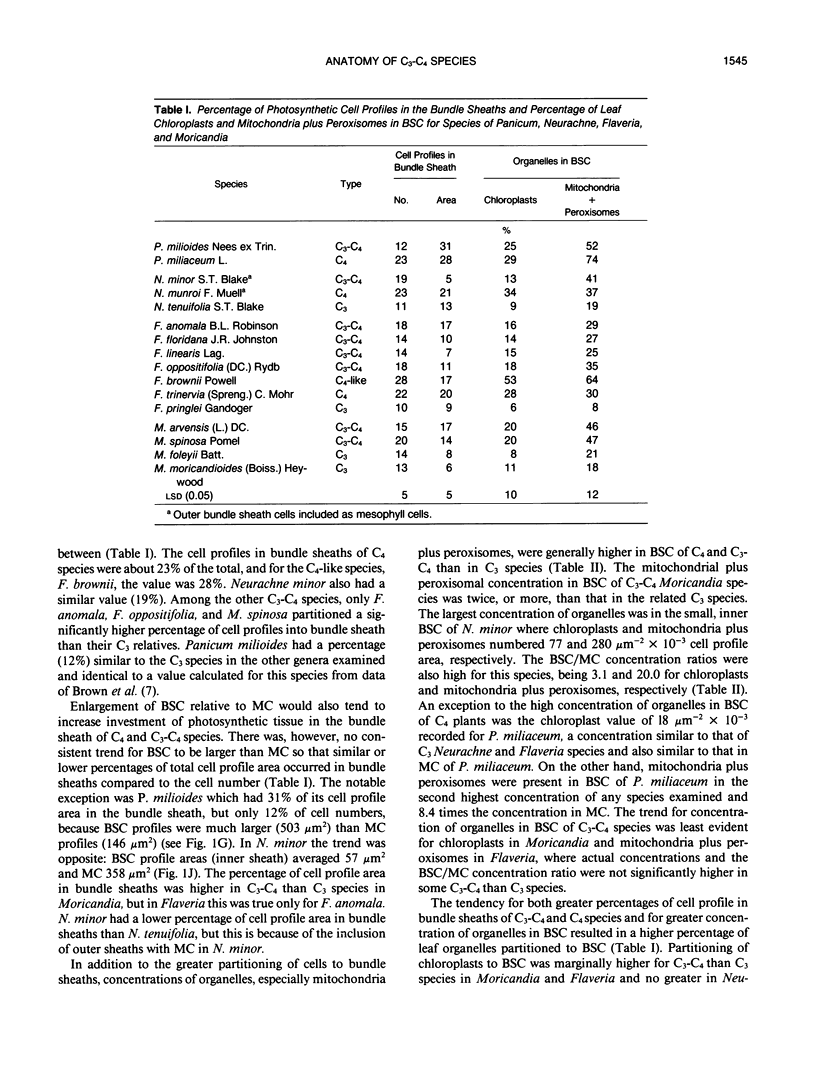
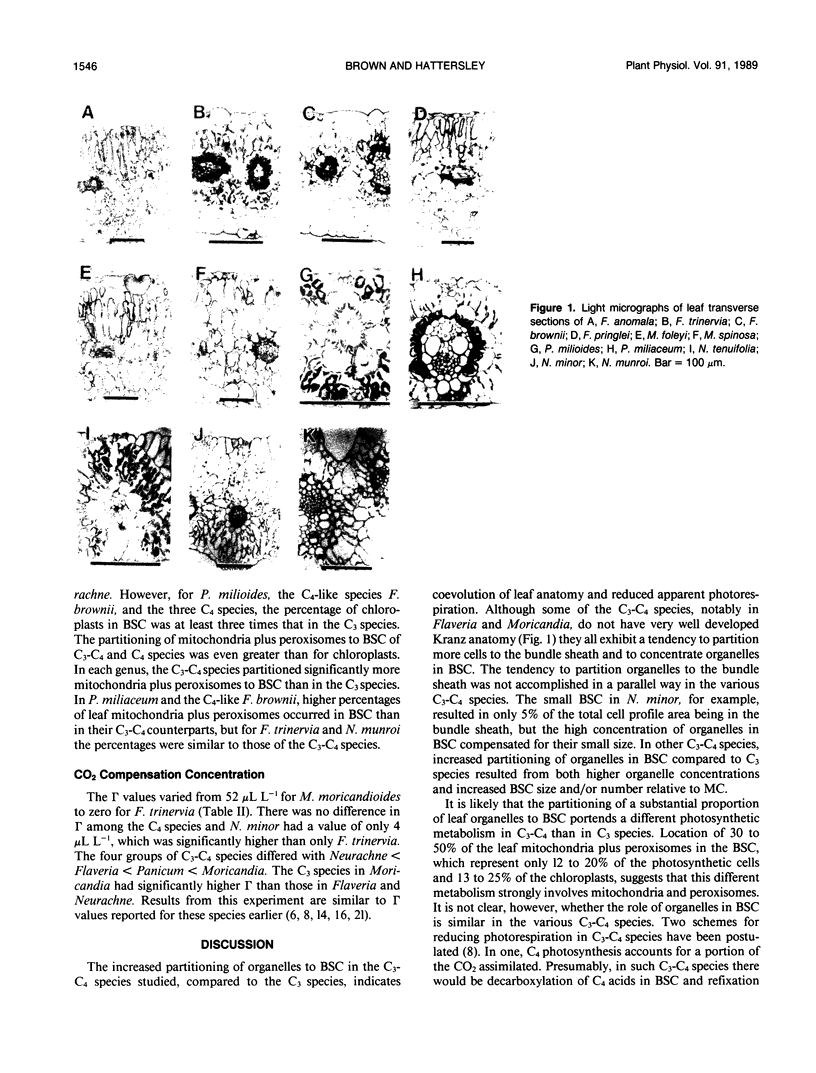
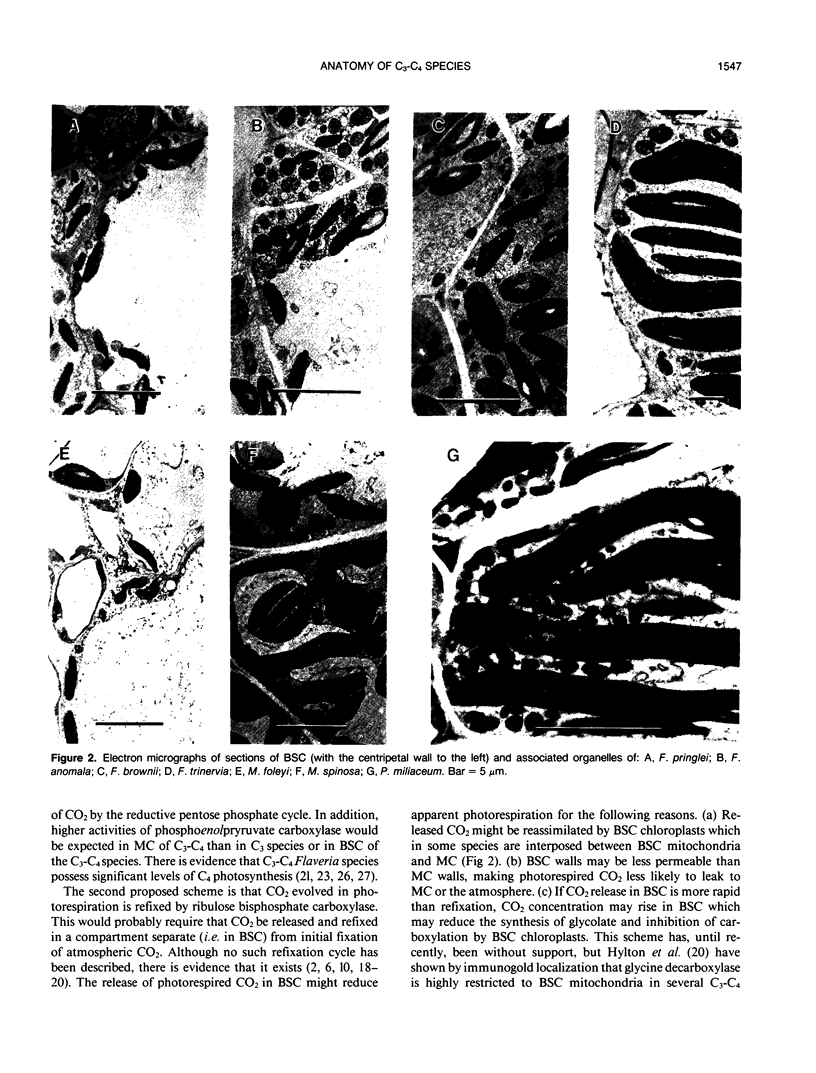
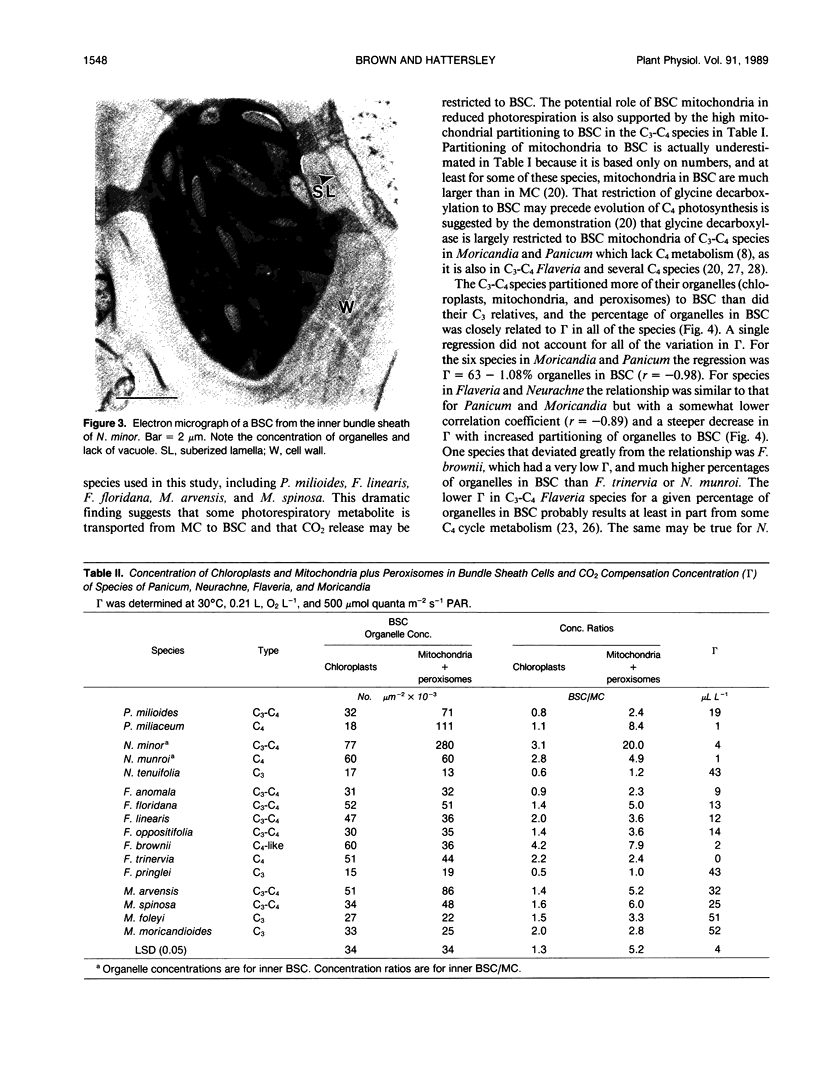
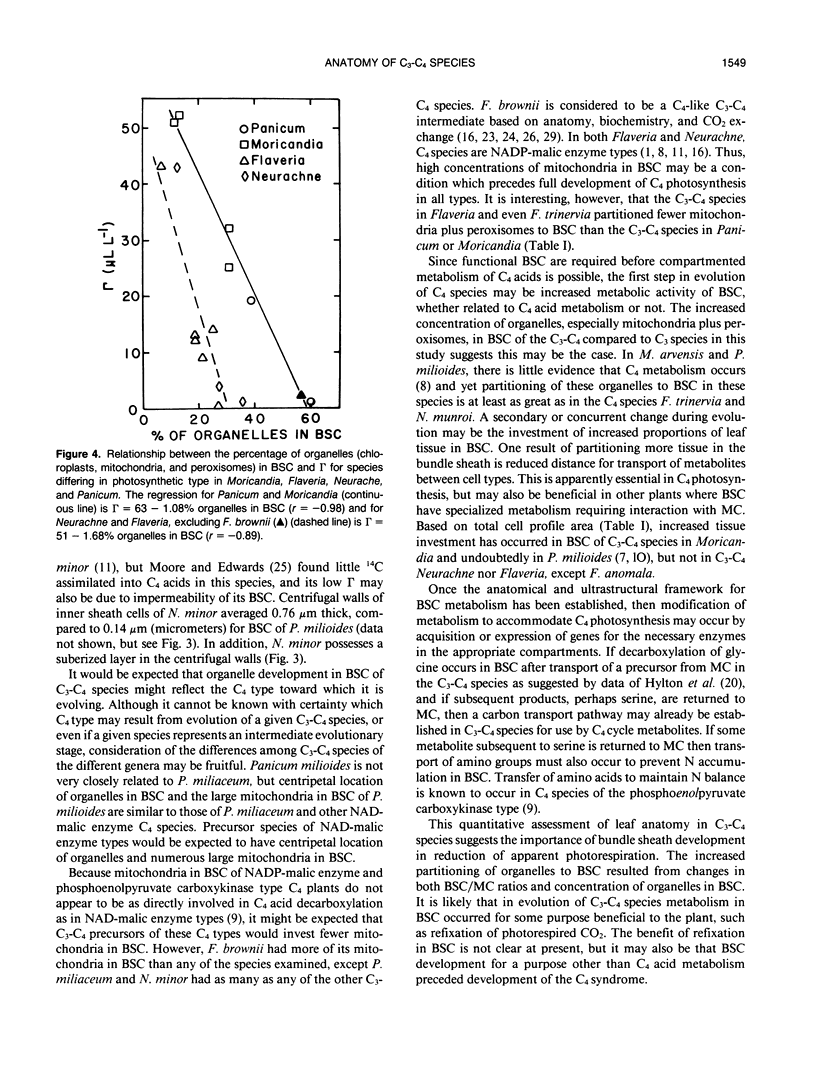
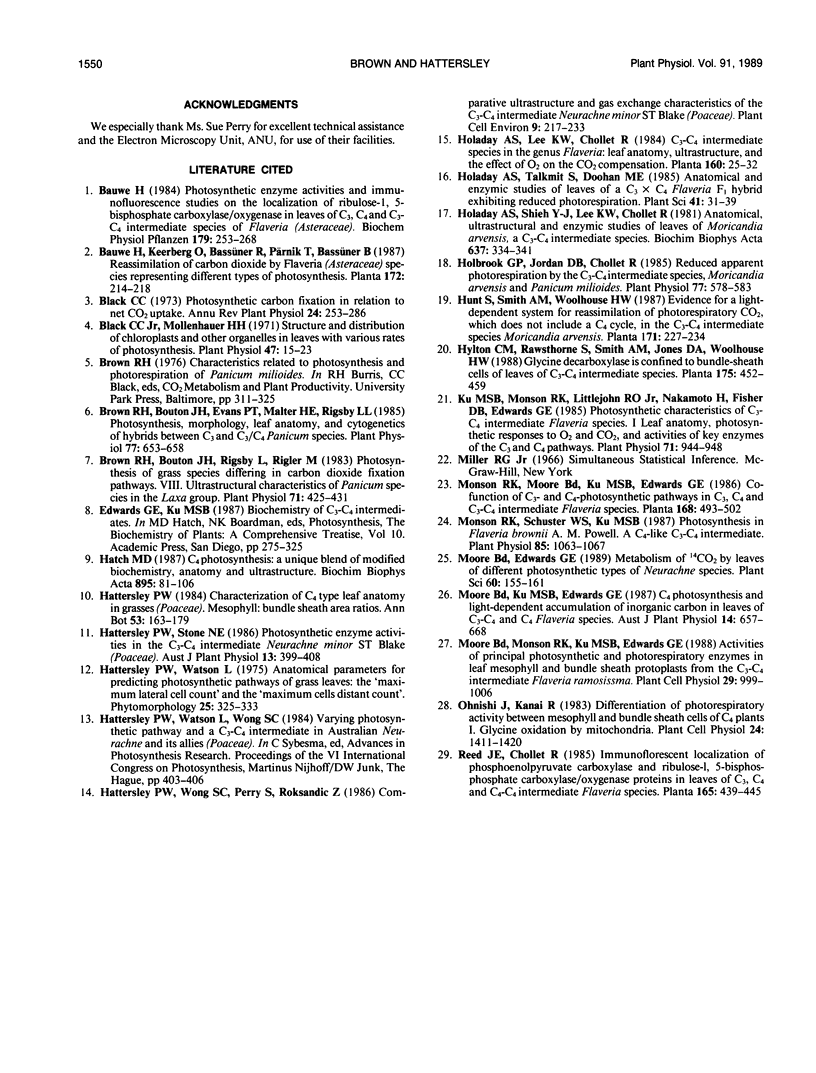
Images in this article
Selected References
These references are in PubMed. This may not be the complete list of references from this article.
- Black C. C., Mollenhauer H. H. Structure and distribution of chloroplasts and other organelles in leaves with various rates of photosynthesis. Plant Physiol. 1971 Jan;47(1):15–23. doi: 10.1104/pp.47.1.15. [DOI] [PMC free article] [PubMed] [Google Scholar]
- Brown R. H., Bouton J. H., Evans P. T., Malter H. E., Rigsby L. L. Photosynthesis, Morphology, Leaf Anatomy, and Cytogenetics of Hybrids between C(3) and C(3)/C(4)Panicum Species. Plant Physiol. 1985 Mar;77(3):653–658. doi: 10.1104/pp.77.3.653. [DOI] [PMC free article] [PubMed] [Google Scholar]
- Brown R. H., Bouton J. H., Rigsby L., Rigler M. Photosynthesis of Grass Species Differing in Carbon Dioxide Fixation Pathways : VIII. Ultrastructural Characteristics of Panicum Species in the Laxa Group. Plant Physiol. 1983 Feb;71(2):425–431. doi: 10.1104/pp.71.2.425. [DOI] [PMC free article] [PubMed] [Google Scholar]
- Holbrook G. P., Jordan D. B., Chollet R. Reduced Apparent Photorespiration by the C(3)-C(4) Intermediate Species, Moricandia arvensis and Panicum milioides. Plant Physiol. 1985 Mar;77(3):578–583. doi: 10.1104/pp.77.3.578. [DOI] [PMC free article] [PubMed] [Google Scholar]
- Ku M. S., Monson R. K., Littlejohn R. O., Nakamoto H., Fisher D. B., Edwards G. E. Photosynthetic Characteristics of C(3)-C(4) Intermediate Flaveria Species : I. Leaf Anatomy, Photosynthetic Responses to O(2) and CO(2), and Activities of Key Enzymes in the C(3) and C(4) Pathways. Plant Physiol. 1983 Apr;71(4):944–948. doi: 10.1104/pp.71.4.944. [DOI] [PMC free article] [PubMed] [Google Scholar]
- Monson R. K., Schuster W. S., Ku M. S. Photosynthesis in Flaveria brownii A.M. Powell : A C(4)-Like C(3)-C(4) Intermediate. Plant Physiol. 1987 Dec;85(4):1063–1067. doi: 10.1104/pp.85.4.1063. [DOI] [PMC free article] [PubMed] [Google Scholar]
- Watson J. D., Yamamoto M. [Cell movement (author's transl)]. Tanpakushitsu Kakusan Koso. 1980;25(5):325–333. [PubMed] [Google Scholar]



